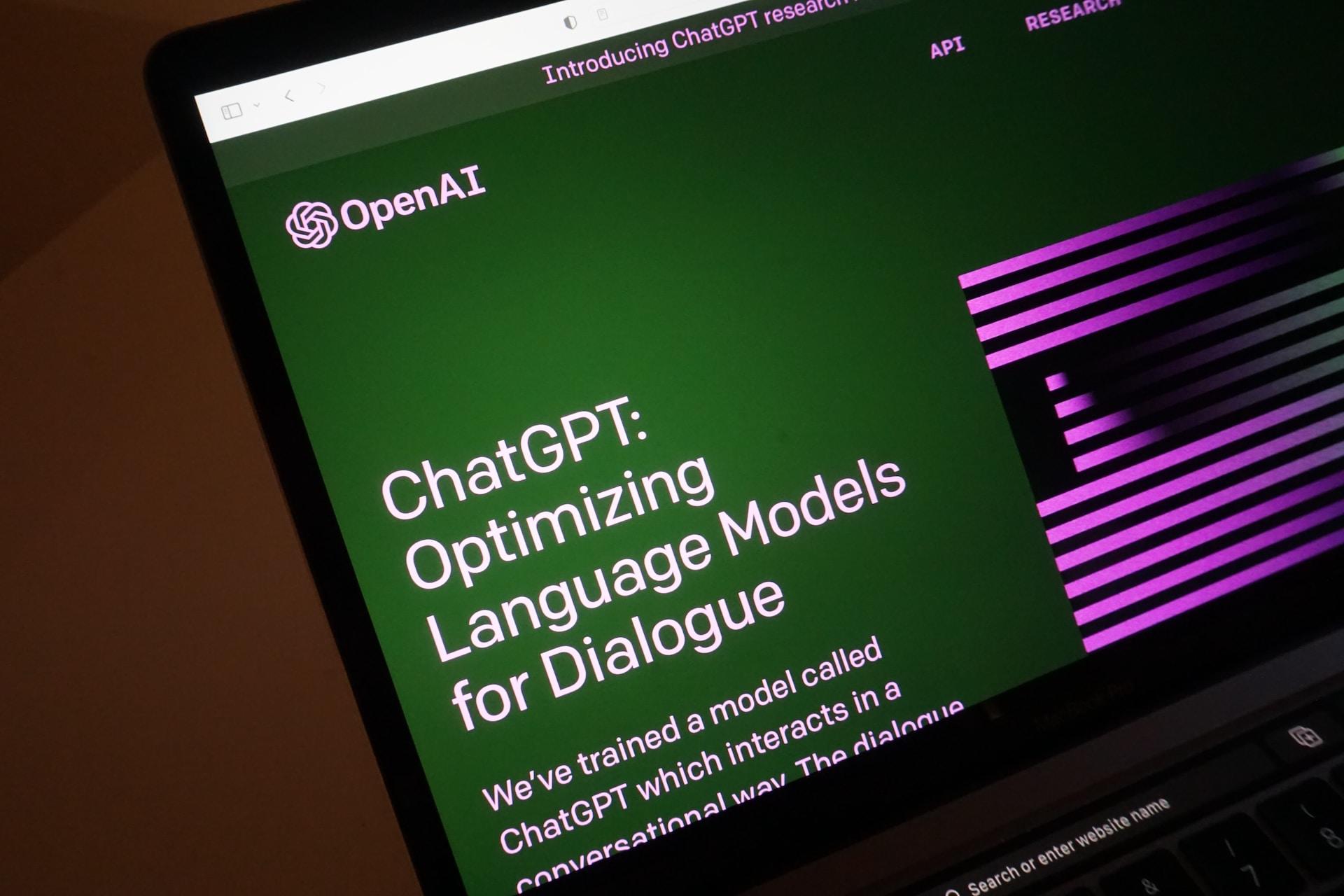AI and Machine Learning are both things that seem to be all over the news recently. With things like ChatGPT and DALL-E taking the headlines for their ability to create texts and images, it seems like the future of AI might be here.
AI has a lot of applications, but there are so many terms you need to understand before you can really start learning about it.
What exactly is AI? What is Machine Learning? And why should we be excited about it?
The answers to these questions and more in this quick guide to AI and Machine Learning.

What Is AI?
AI stands for artificial intelligence and that's arguably also the simplest definition. AI is a machine that can do something that we consider to be intelligence. Basically, it's a machine that does something that the human brain can do.
However, in practice, this basically refers to things that require taking data or stimuli, responding to it, and making a decision or taking action based on several advanced processes that take everything into account.
AI isn't automation so you couldn't really say that the first assembly line robots used AI. Instead, these mechanical devices were trained by a human. Take the robots that first painted cars in factories, for example. The earliest versions of these would record the movements given to them by a human and repeat them on an assembly line.
These may have been considered AI by some when they were invented, but as technology advances, the bar for what is advanced enough to be classified as AI also shifts with it. Generally, the intelligence part of AI comes from problem-solving, weighing up choices, and making them based on various factors rather than strictly following a line of code.
What Kinds of AI Are There?
To make things a little clearer, let's have a look at some examples of the different kinds of AI. Generally, AI is classified into three main types: Artificial Narrow Intelligence (ANI or Narrow AI), Artificial General Intelligence (AGI or General AI), and Artificial Super Intelligence (ASI or Super AI).
Artificial Narrow Intelligence
ANI is the kind of AI that we've been hearing a lot about in the news. This is when AI is applied to a single task or a narrow range of skills. For example, ChatGPT and DALL-E, which create texts and images respectively, only cover a narrow range of the skills and tasks that we consider part of our own intelligence.

This isn't to say that these technologies aren't impressive, but they don't fully represent “intelligence” as a whole but instead specialise in a narrow set of tasks through the use of AI. It may sound quite simple, but even ANI has some programmers worrying about their jobs, though.
Artificial General Intelligence
AGI doesn't exist yet as this would be an AI that comfortably replicates everything it means to have human intelligence.
It's also very unlikely that we'll see anything close to AGI anytime soon and you could imagine AGI as close to the basic robots that you see in sci-fi shows and movies.
Artificial Super Intelligence
ASI is completely in the realm of sci-fi for the time being and this is the kind of AI that does everything human intelligence can do and more.
This is a concept that many writers and scientists have thought about and predicted everything from utopic societies to the end of the world because of this kind of technology. Again, there's nothing to worry about for the time being when it comes to ASI.
What Does AI Do?
AI does whatever it's made for. Some common examples of AI include virtual assistants like Cortana, Google Assistant, Siri, and Alexa. You've likely either used some AI directly or used something that uses AI.
Whenever you use a bank card or a credit card, for example, AI is used to decide whether the transaction is fraudulent or not. If you've ever had a transaction refused or cancelled for seemingly no reason or had to call your bank for it to be approved, an AI system likely flagged the payment as suspicion.
Shopping online and watching your favourite shows also has a lot of AI going on behind the scenes. Recommendations for products and what to watch next are often decided by AI that takes into account your shopping and viewing habits (as well as the habits of many others) to decide what's the most likely thing you'd buy or watch.
AI is also used in many industries like healthcare, farming and agriculture, manufacturing, and many others.
What Is Machine Learning?
Machine learning can be considered a part of AI in some ways. As the name suggests, this is how machines learn. Machine learning basically takes a lot of data and uses it to improve how said machines complete a certain task.

Machine learning could be compared to a superfast version of evolution. An AI is given a task to do, tested on how it does it, and then selects how it was most successful. It then takes the most successful versions, iterates upon them, and repeats this process until it's really good at it.
Obviously, this is a vast simplification of how it all works, but AI and machine learning are complicated topics and far too complex to fully explain in a single article.
Instead of having humans painstakingly attempt to program software that does the job of these kinds of things, machine learning means that putting data into an algorithm allows it to improve its ability at doing what the AI exists to do.
You could think of it as guided trial and error where improving the quality and quantity of the training and testing data will go a long way to improving the accuracy of your AI. In image processing, for example, an AI might be given lots of examples of things it's supposed to identify and then tested on identifying them.
What Is Deep Learning?
Deep learning is a kind of machine learning which uses neural networks to learn. Neural networks (also known as artificial neural networks or ANNs) are a kind of computing system that was inspired by biological neural networks like our own brains and animal brains.

In these networks, the nodes are in layers with the first layer being the input layer and the final layer being the output layer. Between these layers, there are other hidden layers.
With this kind of machine learning, more complex patterns and structures can be found by the weighting and bias within the layers and the machine can learn itself with minimal intervention from humans.
For this to work, however, you need huge amounts of data to train the AI. Each node receiving an input in the input layer needs to pass information through hidden layers with neurons activating according to the information passed onto them.
So What Is the Difference Between AI, Machine Learning, and Deep Learning?
Most experts tend to say that machine learning and deep learning are types of AI with deep learning being a type of machine learning.
AI is a rather broad concept that covers a lot of different applications and you can have an AI that doesn't use machine learning or deep learning.

Machine learning can use smaller sets of data but deep learning naturally requires lots of data. Deep learning is more autonomous than machine learning with less human intervention required.
Deep learning tends to be more accurate, but it'll also take much longer to train so there are trade-offs when it comes to whether or not deep learning is required or even feasible for certain projects.
AI is complex and you could consider machine learning and deep learning some of the possible tools in an arsenal that data scientists and AI experts use to create functioning AI.
How to Learn More About AI, Machine Learning, and Deep Learning
It's probably quite clear not that AI, machine learning, and deep learning aren't the simplest of things, but they are incredibly fascinating. If you want to learn more, then you could naturally study courses in data science or do a degree in AI or data science. Of course, that doesn't mean these courses will be easy, either, but there are always private tutors out there who can help you.
Whether it's AI, data science, or just study skills to make you a more effective learner, you can find tutors all over the country and around the world. There are tutors for all budgets and all types of students and as they tailor their lessons to you, you can be sure that you're learning to the best of your ability. There are private tutors for all budgets and even if there aren't any local private tutors that seem right for you, thanks to online tutoring, you can always broaden your search to include tutors from all over the world.
While AI can just use a lot of data to improve how well it learns, we humans need the right people to teach us in the right way as we all learn differently. There are a lot of benefits to learning about AI through private tutoring.
You can study complex concepts including algorithms, computer systems, and machine learning models from private tutors with academic or industry experience in algorithms or programming languages.
They can also teach you about the specific applications of AI such as image recognition, natural language processing, or how large amounts of data are used for both machine learning and deep learning.















